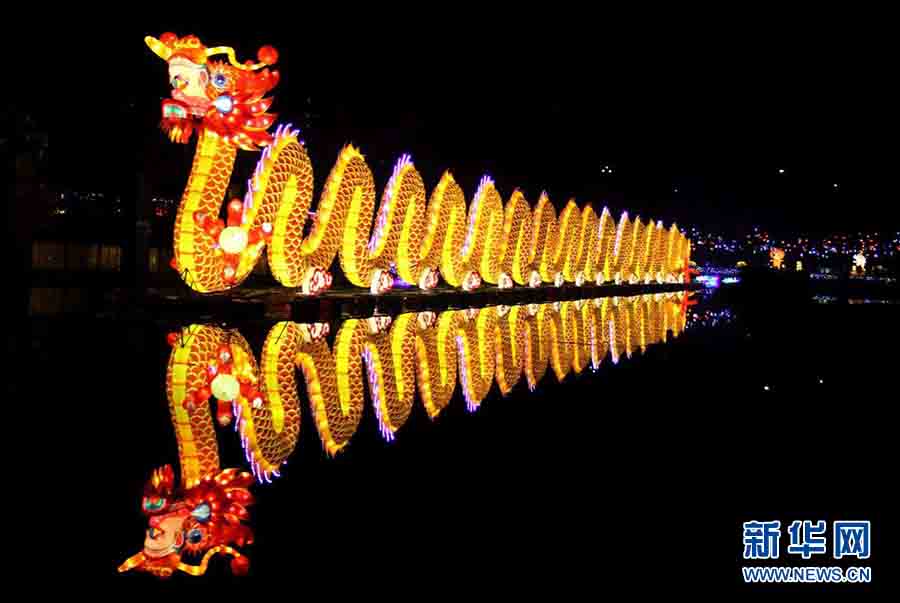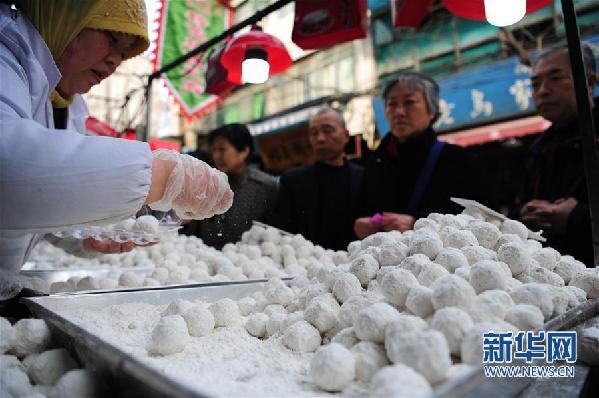


The Lantern Festival, which falls on the fifteenth day of the first month of the lunar year, is one of the most important days within Chinese traditions. It falls on Feb. 19 this year. The festival originates from the Han Dynasty (202 BC - 220 AD). Years of development and transformation gave birth to kaleidoscopic folk customs such as eating Yuanxiao, admiring the full moon, guessing Lantern Riddles and the Lion Dance amongst others.
This year, on this particular day and the day after it, the Palace Museum will hold the first lantern show since its establishment 94 years before.The Forbidden City will for the first time light up in an enormous scale and it will remain free to access by the public just by making reservations.
Mouse dispelling
Mouse dispelling gains its popularity in the regions south of the Yangtze River. The silkworm breeder will cook a wok of sticky porridge on this day, sometimes with a layer of minced meat on top, and put it on the roof or the corner of the wall where mice will usually appear. It is said that by doing this, the mice will not eat the silkworm baby anymore.

Guessing Lantern Riddles
Beginning from the Southern Song (1127-1279), guessing riddles are regarded as an indispensable part of the Lantern Festival. People write all kinds of riddles on various kinds of paper and paste them on colorful lanterns to let visitors guess. If one has an answer to a riddle, they can pull the paper off to let organizers verify the answer. Gifts are presented to the people who get the right answers.
Walking on Stilts
Walking on Stilts, a popular stunt folk art, traces its origins to the Spring and Autumn period(770-476 BC). In the northern part of China, the characters for this folk art are often related to fishermen or female matchmakers. While in the southern part, the characters are more opera-related. This folk art is usually visually-appealing with funny make-up schemes worn by the performers.

Dragon Lantern Dance
The Dragon Lantern Dance became popular during the Han Dynasty (202 BC – 220 AD). As the totem of Chinese civilization, dragons are seen as symbols of auspiciousness. So with that being said, ubiquitous Dragon Lantern Dances on the fifteenth day of the first month of lunar year will certainly lighten up the mood of the folks.
Zou Bai Bing
“Zou Bai Bing”, or literally speaking, “walking hundreds of illnesses out”, is a folk activity that originates in the northern part of China during the Ming Dynasty (1368 - 1644) as well as the Qing Dynasty (1616 - 1912). The participants are almost all women. They walk in groups, alongside walls or across bridges praying for a year free from illnesses and disasters.
Lion Dance
The Lion Dance is also an indispensable performance that adds fun to any celebration including the Lantern Festival. As an auspicious beast in Chinese civilization, the lion is a symbol of boldness and strength that can protect people. So by performing the Lion Dance, everyone prays for an auspicious and happy life. Sometimes folks will hold an Olympic-style competition in which the team that accomplishes designated gestures will score and the one with the highest scores will take the laurel.

Eating Yuanxiao or Tangyuan
Yuanxiao and Tangyuan are basic dainties on the Lantern Festival. Generally speaking, Tangyuan is a regional food that uses a method of wrapping in southern China spanning from Jiangsu and Zhejiang Province. The fillings wrapped up by sticky rice into a shape of a ball are often made of white sugar, black sesame and lard oil. Yuanxiao, on the other hand, is also round in shape and is coated with fine sticky rice powder with fillings such as sweetened red beans paste, white sugar, hawthorn and different kinds of preserved fruits. It could be boiled, steamed or fried. Whether we are going to eat Yuanxiao or Tangyuan during the Lantern Festival, it is an auspicious folk custom and it is endowed with the meaning of reunion, harmony and happiness.

 Award-winning photos show poverty reduction achievements in NE China's Jilin province
Award-winning photos show poverty reduction achievements in NE China's Jilin province People dance to greet advent of New Year in Ameiqituo Town, Guizhou
People dance to greet advent of New Year in Ameiqituo Town, Guizhou Fire brigade in Shanghai holds group wedding
Fire brigade in Shanghai holds group wedding Tourists enjoy ice sculptures in Datan Town, north China
Tourists enjoy ice sculptures in Datan Town, north China Sunset scenery of Dayan Pagoda in Xi'an
Sunset scenery of Dayan Pagoda in Xi'an Tourists have fun at scenic spot in Nanlong Town, NW China
Tourists have fun at scenic spot in Nanlong Town, NW China Harbin attracts tourists by making best use of ice in winter
Harbin attracts tourists by making best use of ice in winter In pics: FIS Alpine Ski Women's World Cup Slalom
In pics: FIS Alpine Ski Women's World Cup Slalom Black-necked cranes rest at reservoir in Lhunzhub County, Lhasa
Black-necked cranes rest at reservoir in Lhunzhub County, Lhasa China's FAST telescope will be available to foreign scientists in April
China's FAST telescope will be available to foreign scientists in April